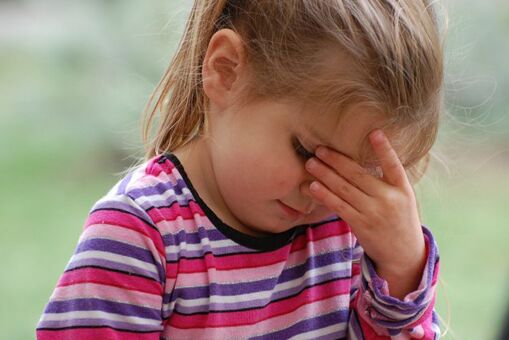Headaches are a common complaint among children and are usually not a cause for concern. In most cases, they are temporary and linked to minor illnesses such as colds or the flu. However, understanding when a headache might be a symptom of something more serious is essential for every parent.
Common causes of childhood headaches
Most childhood headaches are associated with respiratory tract infections. These include colds, flu, or sinus infections, especially in older children. Often, headaches in these cases come with fever, congestion, or sore throat.
Chickenpox and infectious mononucleosis can also cause headaches. In these situations, symptoms usually include fatigue and a lack of appetite. Pain relievers like paracetamol or ibuprofen, nose cleaning, and steam inhalation often provide relief. Once the fever and headache subside, the child usually returns to normal activity quickly.
Tension headaches and emotional triggers
Children, especially those in school, may experience headaches due to emotional stress. Starting school or experiencing academic pressure can be stressful. Tension headaches are typically not severe and tend to improve during school breaks or holidays.
These headaches are not accompanied by fever or vomiting, and the child generally appears healthy otherwise. Ensuring enough rest, sleep, and outdoor activities is crucial. However, psychological support may be helpful if the headaches persist.
Warning signs that require immediate attention
Although most headaches are harmless, some can signal serious health issues. Seek immediate medical help if:
- The headache is severe and medication does not help
- It is accompanied by a high fever, vomiting, or a rash
- The child appears lethargic or unusually tired
- The headache is sudden and intense
These could be signs of meningitis, encephalitis, or a brain hemorrhage. Immediate diagnosis and treatment can be life-saving.
Recognizing migraines in children
Migraines can occur even in preschool-aged children, particularly if there is a family history. Symptoms may include severe headaches, vision changes, nausea, and vomiting. Migraines often appear without fever or signs of infection.
If your child complains of visual disturbances or shows signs of confusion, contact a healthcare provider without delay.
When to suspect a brain tumor
Persistent daily headaches lasting for weeks and increasing in intensity require urgent evaluation. If headaches wake the child at night or are worse when lying down, this may indicate increased intracranial pressure. Additional signs include nausea, loss of appetite, and fatigue.
Early detection and intervention are essential for better outcomes in such cases.
Home care for mild headaches
If the child appears healthy and the headaches are mild, you can usually manage symptoms at home. Offer appropriate doses of pain relievers and ensure the child drinks plenty of fluids and rests.
Follow dosage guidelines carefully and never exceed the recommended limits. If symptoms persist beyond a few days or worsen, seek medical advice.
Final thoughts for parents
Most childhood headaches are short-term and not dangerous. Still, parents should stay alert to warning signs that might suggest something more serious.
Proper rest, hydration, emotional support, and healthy routines can prevent many tension-related headaches. When in doubt, always consult a pediatrician for guidance and reassurance.
Key Takeaways
- Most childhood headaches are due to minor infections
- Emotional stress can also be a trigger
- Severe or persistent headaches require medical attention
- Always monitor the child’s general condition and behavior
LittleDot provides access to pediatric specialists for virtual consultations, offering expert advice whenever you’re unsure about your child’s symptoms. Visit littledotapp.com to learn more.
